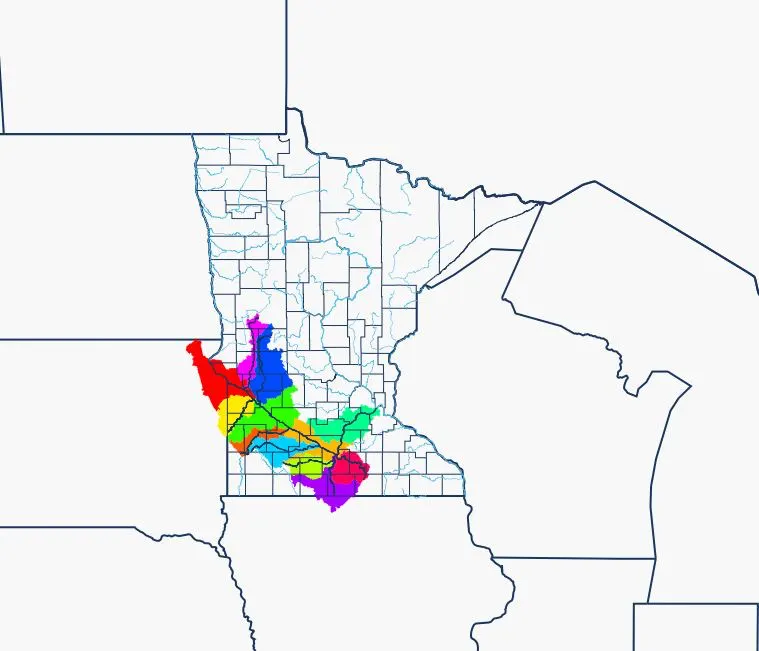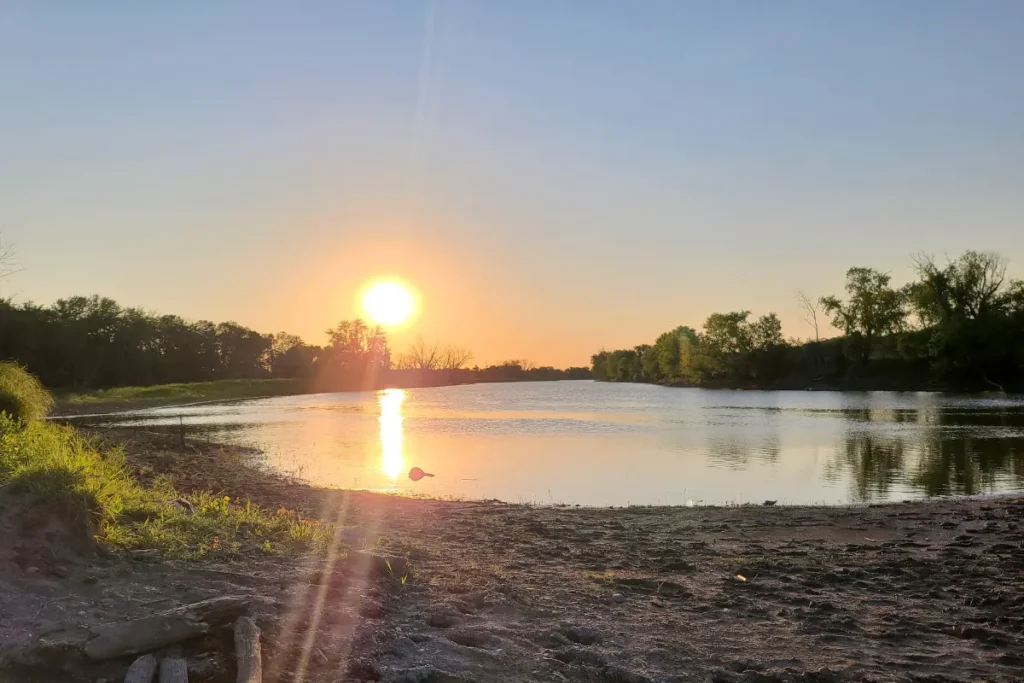First and foremost, CURE dedicates resources to assure the health and sustainability of the Minnesota River Basin. Staff and members work together to wisely develop strategies that engage partners and decision-makers to take action to protect and restore water quality, biological integrity, and natural beauty. Though this effort starts in our own backyard, we sometimes find ourselves working to craft and pass both state and federal land and water policy.
For those who call the Minnesota River Basin home, it is a special place.
Perhaps they are in awe of the geological history of the valley, a story of torrential Glacial River Warren bursting through an ice dam and violently carving a chasm across the landscape. Perhaps they find solace in the remaining native prairie, where brightly colored wildflowers and the textures of foliage in infinite shades of green are the backdrop to buzzing insects, trilling songbirds and nesting gamebirds. Perhaps they take pride in the sheer agricultural productivity of the land, the rich black soil, and the satisfaction of a harvest. Perhaps they appreciate the potluck table bowing under the weight of good food and they feel welcomed by a community that both prides itself on its independent resilience and gladly shares the bounty of a good life.
Regardless, all recognize the Minnesota River Basin as a special place.
At the same time, the Minnesota River Basin faces special challenges. The Minnesota River, a mere trickle of its glacial predecessor, collects the water from almost 17,000 square miles (10 million acres) of land that sweeps across southwest and South Central Minnesota. By the time this water makes it to the Mississippi River just upstream of St. Paul, it is laden with soil particles (TSS, or total suspended solids, in geek-speak), nitrates and phosphorus, and fecal coliform bacteria. Often the dissolved oxygen level in the river is too low to support healthy aquatic life. Floods plague us in the spring, and algal blooms plague us in the summer.
These problems are the symptoms of a drastically changed landscape that has interrupted the water cycle. We have replaced a prairie ecosystem with an agricultural ecosystem that relies on two predominant annual crops–corn and soybeans. To return clean water to the Minnesota River and its tributaries, we will need to systemically, thoughtfully, and respectfully address this landscape-level change. This is a job for all of us, and we look forward to working with you!

The Minnesota River Basin is made up of 12 major watersheds. For an interactive Map and and explanation of this jargon, check out our “What is a Watershed, Anyway?” blog post.


